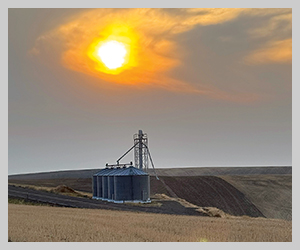Ag overtime rules: Is there a workable solution?

For many farmers in Washington state, paying their employees overtime pay has not been required in the past. No matter how long the day, employees earned their hourly pay rate. It was simple, convenient and predictable for the farmer and the employee. However, a November 2020 Washington Supreme Court case (Martinez-Cuevas vs. DeRuyter Bros.) has changed this practice, impacting both farmers and their employees. As of Jan. 1, 2022, employees in the agricultural industry are entitled to receive overtime pay.
This leaves many farmers with unanswered questions and a need to become informed. I advise taking a conservative approach to the new law to avoid lawsuits and fines in the future.
The law (ESSB 5172) allows most agricultural employers to phase overtime pay in over three years, starting in 2022. (Editor’s note: In 2022, overtime kicks in at 55 hours. In 2023, that drops to 48 hours, and in 2024, it becomes 40 hours).
A common misinterpretation we hear from farmers is, “I put my employee on salary, and overtime does not apply.” Paying employees a salary does not, in itself, eliminate them from overtime pay; they must meet a “white-collar” salaried exemption as an executive, administrative or professional. The executive exemption is most common in agriculture and is the focus of this article.
First, the exemption does not apply to manual laborers and other blue-collar workers who perform work involving repetitive operations with their hands, physical skills or energy.
Second, the executive exemption requires meeting both a duties test and a salary test.
- Duties test: While there are several duties tests, in most cases, the employee will need to direct the work and have the hiring and firing capabilities over at least two full-time employees. This is tough to meet with most farmworkers in a dryland farm setting.
- Salary test: If they meet the duties test above, employees also need to meet the minimum salary test. In 2022, their salary needs to be at least $52, 744. This number is projected to increase to $85,000 by the year 2028.
A salaried employee who does not meet the exemption requirements is entitled to overtime pay. The above tests show that only a tiny percentage of farmworkers will qualify for the executive exemption.
 Solution
Solution
If there is no workaround, what do we suggest? While every situation is different, I have run numbers on some realistic operations and calculated the cost of implementing the overtime rules on an hourly employee putting in roughly 500 hours of overtime. When the law is fully implemented in 2024 (40 hours per week), the additional cost will be approximately 10 percent. The law will be phased in over three years, so this increase would be about 3 to 4 percent per year. Employers could manage the effect by limiting annual wage increases and replacing them with overtime pay.
Your risk as the employer is a disgruntled employee turning you in for not following the rules or a random check from L&I. I encourage farmers to move their employees to an hourly payroll system because it is simple to track and provides the least complications and risk. Also, follow these guidelines:
- Require time cards for all employees, signed by the employee and maintained by the employer.
- Communicate with your employees from the start.
- Farmers often think that making these employees independent contractors is a solution to the overtime rules. Generally speaking, this does not work. They need to be bonafide independent contractors to make this an option.
- Farmers talk about sharing employees with neighbors to avoid exceeding the hour limit. However, rules relating to a “working relationship” could hamper this workaround.
Cost of not complying
Many farmers tend to brush this off and assume it is not a big deal. If this is challenged, the farmer could be liable for back overtime owed for three years, and this amount is then doubled as a penalty. In addition, they will incur interest on the back wages at 12 percent. And lucky you, you get to pay both sides of the attorneys’ fees. This calculation, when complete, can lead to a staggering number.
Conclusion
Unfortunately, the new rule will hurt farmers statewide. Lawsuits are not a matter of if but when. There is not an easy, one-step solution to deal with these changes. I encourage farmers to assess their situation, develop a plan and communicate it with their employees.
Employers can manage the effect of this new requirement, and likely, the cost can be minimized by planning up front. I do not feel this legislation was good for either the employer or the employee, but our politicians probably don’t care. A farm manager’s job is to best manage their operation despite the challenges thrown at them.
*PowerPoint slides including several examples on this topic can be found on our website.
Jared King, C.P.A., is an employee at Leffel, Otis, and Warwick P.S. He works out of the firm’s Davenport office. Jared works primarily with farmers and ag-related businesses. He can be reached at jking@low.cpa.













